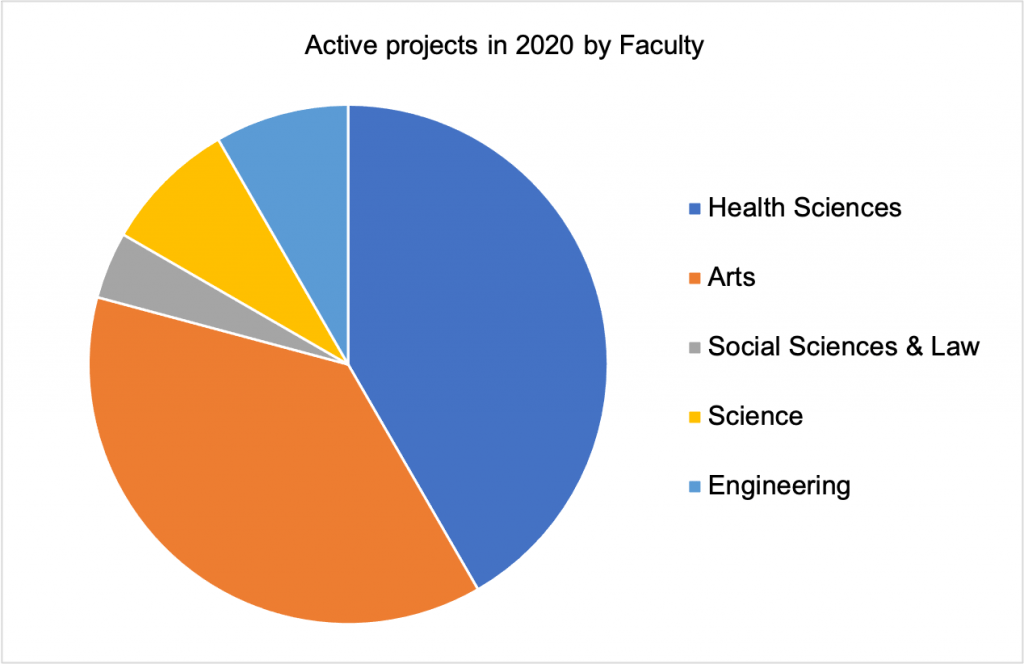To celebrate the first International Research Software Engineers (RSE) day our team wanted to promote becoming an RSE as a career path and raise awareness of Research Software Engineering in general. We think it’s one of the most diverse and exciting technical disciplines and hope this blog post might convince you to think the same.
What is an RSE?
Defining the role of a Research Software Engineer is difficult as it’s an exceptionally varied role that differs between research institutions. Its breadth is best captured in the definition provided by the Society of Research Software Engineering:
“A Research Software Engineer (RSE) combines professional software engineering expertise with an intimate understanding of research.”
Source: https://society-rse.org/about/
In our team the RSEs design, create, deliver and support technical solutions enabling research projects at the University of Bristol. These aren’t the ancillary services to facilitate research (such as finance systems etc) but technical solutions that directly deliver research outcomes. For example, creating an iPad app that a research team uses with a study group as part of their research. In addition we work with academic colleagues to help them with the grant application process. This work involves requirements gathering, the creation of technical estimates and writing data management plans that form part of their research funding submission.
Why be an RSE?
So, you’re interested in research and software engineering? Let me try and convince you that becoming an RSE is the career for you:-
- Interesting and novel projects
You’ll work on diverse and interesting projects. Any academic at the University of Bristol can contact our team and ask us to be involved in their research. That means we have an exceptionally diverse range of projects we’re working on. These range from engineering to history and from medical research to the impacts of climate change. Most importantly, these are research projects and so are novel applications and things that have not been done before. - Technical freedom
All developers love a bit of technical freedom… the flexibility to learn something new and to be able to use the “right tool for the right job”. Research Software Engineering allows a lot of flexibility because not only do you need to pick the “best of breed” solution for any given problem to demonstrate value for money for funders but our research projects have a finite timespan. In most cases this is several years but for proof-of-concept work this could be just a few months. This known lifespan means that we have flexibility to try out new things if they are appropriate to that project. - RSEs come from varied backgrounds
Research Software Engineers come from a variety of backgrounds because it’s a very flexible discipline and you don’t need to come from a conventional computer science background. Many academic disciplines help develop strong data handling and programming skills and these can be discipline specific which makes them invaluable in a research software engineering team. Also, if you have some research experience then this makes you better able to help with the grant application process, contributing to academic publications and in understanding research outputs. Our RSEs have a diverse mix of backgrounds and experiences (many switched careers to become RSEs) and this is of huge positive benefit to the team. In my case, for example, I do not have a computer science background and am a self-taught programmer. I have a strong interest in software development but when doing field work on flies (Lucilia sericata – check them out, they’re cool) I wouldn’t have dreamt that years later I’d be writing software to help children with eye movement issues or creating online games to help explain bird flight research. - Development for social good
Academic research furthers human knowledge so RSEs get to work on projects that are delivering clear benefits. In some cases there are obvious direct benefits such as our mobile app to help assess earthquake risks to school buildings in Nepal. In other cases our work involves making something available to people that has never been available in that form before. For example, the MPESE project that made the hidden archive of early Stuart England’s manuscript pamphlets available online.
We hope that this fairly brief blog post has helped raise the profile of RSEs and maybe even convinced you that you might want to become an RSE. If you want to know more than here are some useful links:
- Research IT, University of Bristol:
- Society for Research Software Engineering:

